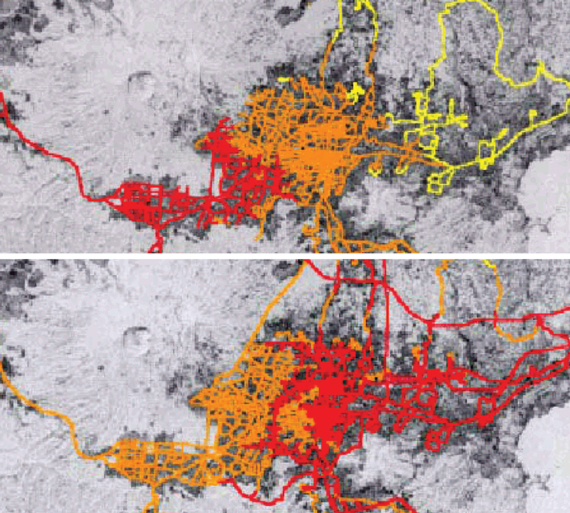Projects
San Salvador Urban Development Master Plan

Isochrone Map
The San Salvador metropolitan area represented an emblematic case of “city-state” – with the typical features and problems of many large urban areas in South America – even if of small dimensions. During the previous twenty years San Salvador concentrated most of the Country population, business, utilities, investments and, as a consequence, the building activity highly increased. The fast and unrestrained city growth had negative impacts on the environment and built up areas, causing a strong decay of urban spaces and inhabitants quality of life.
The Urban Plan “PLAMADUR – AMSSA” (Plan Maestro de Desarrollo Urbano del Area Metropolitana Ampliada de San Salvador) aimed at changing the current trend, introducing new urban design guidelines as well as new building methods and rules and new operational approaches to merge normative and strategic issues related to the town planning. As part of the whole project of renewing, Systematica contributed to the work carrying out the “Mobility System” sectorial study, focusing on the three main objectives of:
- Reorganising the road network and the public transport services in terms of infrastructures and operation;
- Completing the road network, where currently fragmented;
- Building new road infrastructures and massive public transport systems, that resulted in the three main proposals of:
– a new rail link dedicated to the freight service within the Apopa Municipality;
– a new massive transport service crossing the north area of the City Centre;
– a new massive transport link between the railway station and the Apopa Municipality.
The solutions were assessed in terms of city accessibility and their effectiveness was confirmed by means of large-scale simulation tools applied to the whole San Salvador urban and metropolitan area.